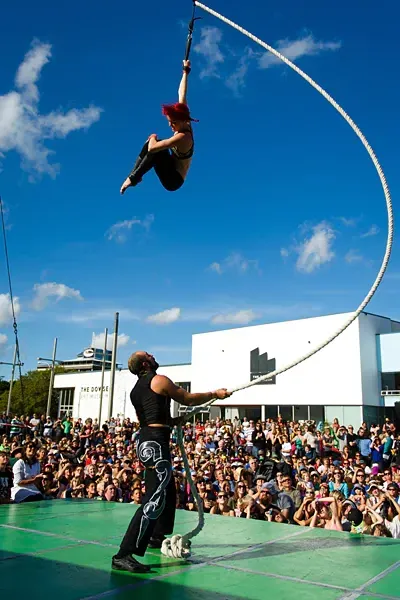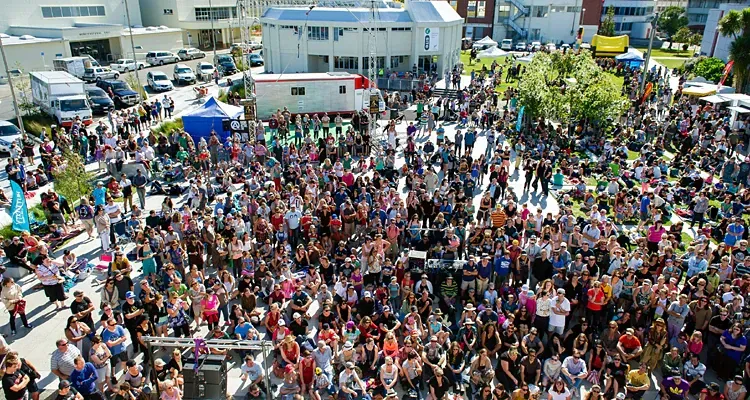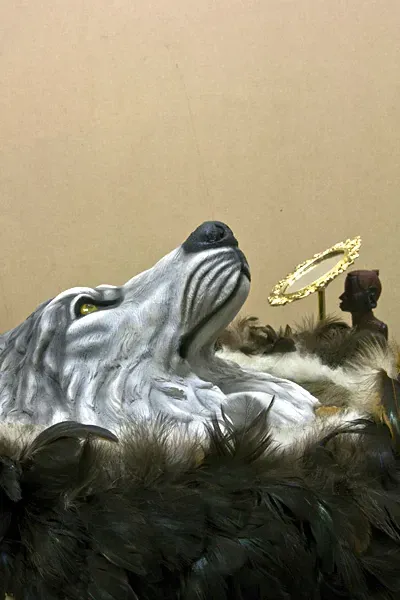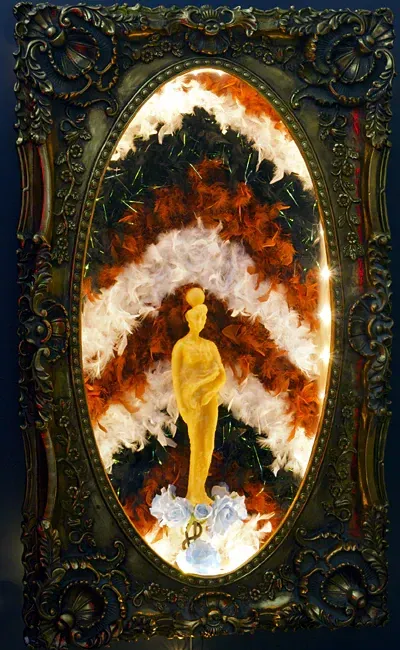Activating Art
Written by
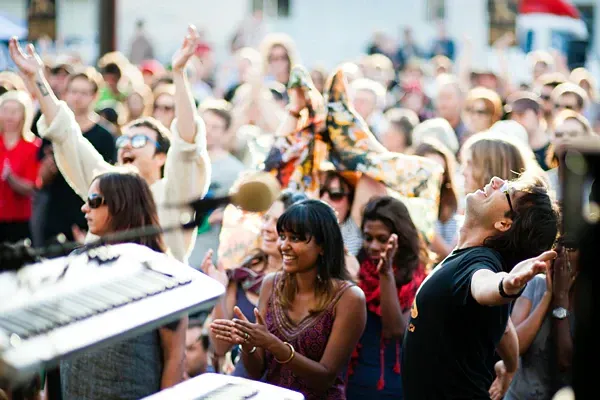
Mark Amery considers events that get artworks and people talking to one another.
* * *
The other weekend I attended White Night in the Auckland Festival. For this gargantuan city-wide event, dealer galleries and institutions stayed open late into the night. There were hundreds of accompanying free public events, substantial backing from business (who can see the economic benefit of it all), free public transport, and the streets were full of public art and people. Lots of people. There's a carnivalesque magic to it all, the world turned upside down for a night in which both city and the creative spirit are celebrated.
It was a delight then to return to Wellington and attend the Big Day Dowse at the Dowse Art Museum, Lower Hutt on Sunday. The museum and its adjacent park were packed with people of all ages, enjoying music, food and art. One of the things I really like about these events is how everyone is on the same level. Gallery staff, from the top down, are all out there in their t-shirts mucking in, sharing the experience as part of one big community.
I was particularly impressed by the engagement of a wide range of people with the exhibition I had come to see, curatorial intern Ane Tonga's aptly titled Everyone Talks to Everyone. This group exhibition sees a wide range of work from emerging and established artists working across art and design. This is a pretty standard curatorial premise currently, but it was the intimacy and elegance of the conversations Tonga set up that was so engaging.
The gallery was darkened and comfortable, suggestive of a domestic living room. This was heightened by the work selected: Niki Hastings' McFall's plastic flower covered chair and ashtray, for example, near Michael Parekowhai's photograph of a flower arrangement, and Sean Kerr's flickering lamp with Facebook on a Macbook on a desk, taking on a viral life of its own. Each served the room itself: one of those living rooms housing that eclectic range of objects and decoration that make up a peculiarly personal portrait.
Central is an installation by Alvie McKree at the far end. It's a darkened grotto full of handmade and appropriated objects of many different cultural sources, arranged with the kind of shrine-like bling people often employ for things we hold of symbolic value. An overdressed gothic fantasia, complete with large gilt frames, it melds excess cheapness with reverence - guaranteed to appeal to those from Boganville. As a whole it was too decorative for my tastes but is certainly seductive.
A particularly nice pairing in the exhibition are works by Sofia Tekela-Smith and FIona Pardington. Tekela-Smith's slim black bust sculpture, makes personal through adornment the archetypal domestic exotica of the silhouette of a black person. Fiona Pardington's photograph is of a black plaster life cast of the head of a Samoan chief Tou Taloa, made in 1839 by the French. In their elegant reappropriation both have a grace and peace about them.
Leading public engagement with the exhibition is Typeface, a work by Maila Urale (with Johann Nortje), providing a physical conversation between visitor and artwork. As White Night bore out, there's quite a lot of this kind of digital art around - your movement effecting the abstraction before you on a screen. Much I find banal and a little empty, but Typeface successfully turns viewer into dancer. It gets you thinking and feeling with your body. Inspired by Polynesian tattoo designs, Urale uses the punctuation marks to be found on your keyboard for her patterns, suggestive of a coded conversation, and reminiscent of Len Lye's handmade painted film work. The viewer appears as a purple silhouette within the mesh, their presence activating some irresistible audio beats.
As for White Night, there's no reason why this programme, which can be found all the world wouldn't with some big picture vision work marvellously in Wellington. This is the kind of event which sees the public come to own and love their city and their galleries. I have no doubt many return year around, having discovered what pleasures are consistently, but more quietly, on offer in our galleries.
- Everyone Talks to Everyone, until 9 June, Dowse Art Museum
MUST SEE
A young and an old pro from Auckland tee off together in this playful installation. Watkins' depicts his father's golf club in digital prints and watercolours, and Thomas (of the now defunct Snake Pit Gallery) provides his take on pinball games, plus thatching inspired by a Rarotongan residency.
Fairways and Bunker, Denys Watkins and Sam Thomas, until 6 April, 30 Upstairs
